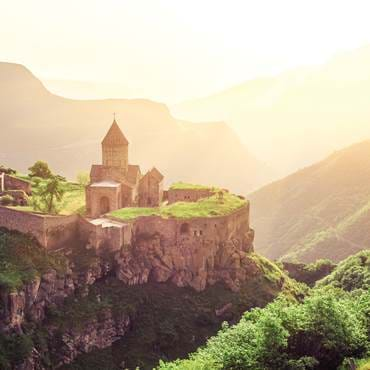
Georgia
Georgia is at the crossroads of Europe and Asia. The former Soviet republic is home to Caucasus Mountain villages and Black Sea beaches. Renowned for Vardzia, a sprawling cave monastery dating to the 12th century, and the old wine-growing region Kakheti. The capital, Tbilisi, is famous for wonderful architecture and a maze of cobblestone streets in the old town.
It heralds an intricate history. Throughout the classical era, several independent kingdoms became established in what is today modern Georgia, such as Colchis and Iberia. In the early 4th century, the Georgians officially adopted Christianity. The Georgian Orthodox Church was a significant element in the spiritual and political unification of early Georgian states.
The Golden Age of the unified Kingdom of Georgia occurred during the reign of King David the Builder and Queen Tamar the Great in the 12th and early 13th centuries. The kingdom subsequently declined and dissipated under the dominance of various regional powers, such as the Mongols, the Ottoman Empire and successive dynasties of Iran.
The eastern Georgian Kingdom of Kartli-Kakheti developed an alliance with the Russian Empire in the late 18th century. This directly annexed the kingdom in 1801 and in 1810 conquered the western Kingdom of Imereti. Eventually Russian rule over Georgia was acknowledged in peace treaties with Iran and the Ottomans. Through the course of the 19th century, the remaining Georgian territories were sporadically absorbed by the Russian Empire.
Since the fall of the Iron Curtain, Georgia's varied landscapes are reason enough to visit — Europe’s highest mountains, fertile plains, semi-tropical coastlands, and arid steppes create an inspiring backdrop to this country’s elaborate history.
Upcoming Departures
15 days
£6,550
6 June 2024
 GB
GB
 US
US




